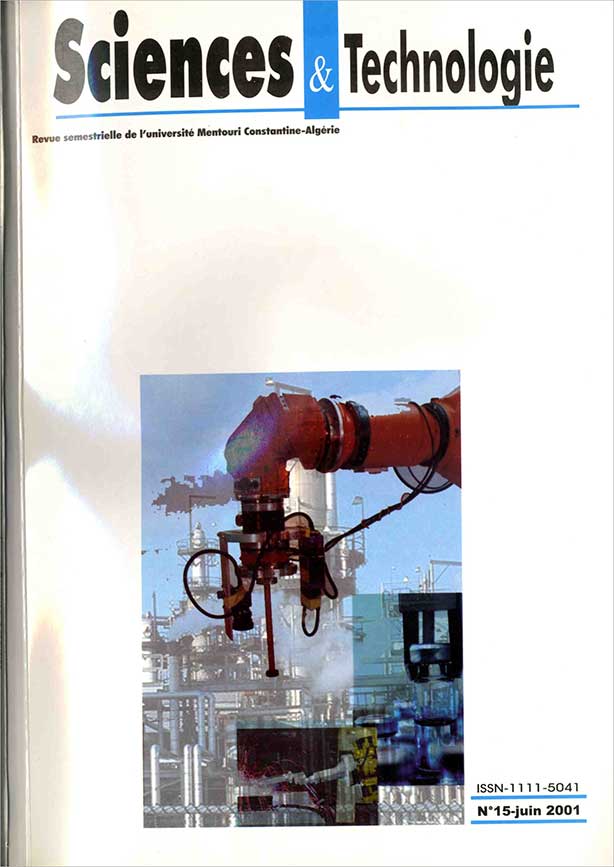LA PRODUCTION D'ANTICORPS MONOCLONAUX: IMPORTANCE DE LA NATURE DE L'ANTIGENE UTILISE DANS LE RENDEMENT DE LA TECHNIQUE
Keywords:
Anticorps monoclonaux, immunogénicité, glycoprotéine, EHV1, antigène, protéine recombinante, E.ColiAbstract
Le succès de la production des anticorps monoclonaux (ACM) repose principalement sur l'immunisation de la souris, source de LB. Plusieurs facteurs sont alors à considérer dont la quantité d'antigène administrée, le nombre d'inoculations, la voie d'inoculation et la nature de l'antigène. Ce dernier facteur a fait l'objet de cette étude. En effet, une glycoprotéine de l'herpèsvirus équin-1 (EHV-1): la glycoprotéine L (gL) recombinante produite dans E.coli par génie génétique a été utilisée pour produire des ACM. Cette protéine recombinante, même produite dans un système cellulaire simple, la bactérie, s'est avérée immunogène car elle a induit la production d'ACM. Ces ACM appartenaient à la classe IgM. L'utilisation de diverses techniques immunologiques a montré que ces anticorps reconnaissaient la protéine virale native. Ce résultat nous encourage à utiliser la bactérie pour produire des protéines immunogènes. Ceci est un grand avantage car la bactérie, peu exigeante, est facile à manipuler et se réplique rapidement.Downloads
References
- Westerwoudt R.J., "Improved fusion methods. IV- Technical aspects", J. Immunol. Meth., 77, (1985), pp. 181-186.
- Taggart R.T., "Culture methods for the selection and isolation of stable antibody-producing murine hybridomas. Methods of hybridoma formation", pp. 181-193. Edited by Bartal A.H. and Hirshaut Y. (1987).
- Bartal A.H. and Hirshaut Y., "Current methodologies in hybridoma formation. Methods of hybridoma formation", pp. 1-33, Edited by Bartal, A.H. and Hirshaut Y. (1987).
- Bazin R. and Lumieux R., Effect of the elapsed time after the final antigen boost on the specificity of monoclonal antibodies produced by B cell hybridomas", J. Immunol. Meth., 112, (1988), pp. 53-56.
- Lane D., "Antibodies. A laboratory manual", Ed. Harlow E.D. (1988).
- Meredith D.M., Stocks J.M., Whittaker G.R., Halliburton I.W., Snowden B.W. and Killington R.A., "Identification of the gB homologues of equine herpesvirus types 1 and 4 as disulphide-linked heterodimers and their caracterisation using monoclonal antibodies", J. Gen. Virol., 70, (1989), pp. 1161-1172.
- Ross L.J.N., Watson D.H. and Wildy P., "Developpment and localisation of virus-specific-antigens during the multiplication of HSV in BHK21 cells", J. Gen. Virol., 2, (1968), p. 155.
- Mainwaring W.I.P., Parish J.H., Pickering J.D. and Mann N.H., "Nucleic acid biochemistry and molecular biology", Blackwell scientific publications (1982).
- Davis B.D., Dulbeco R., Einsen H.N. and Ginsberg H.S. Microbiology, 4th edition (1997).
- Osterieder N., Wagner R., Pfeffer M. and Kaaden O.R. Expression of equine herpesvirus type 1 glycoprotein gp 14 in E.coli and in insect cells: a comparative study on protein processing and humoral immune responses, J. Gen. Virol., 75, (1994), pp. 2041-2046.
- Stokes A., Cameron R.S., Marshall R.N. and Killington R.A. "High level expression of EHV-1 glycoproteins D and H and their rôle in protection against virus challenge in the C3H (H-2K) murine model", Virus research (1997).
- Bridges, C.G. and Edington N., "The proteins of equide herpesvirus 1 recognised by equine antisera and their ability to promote antibody-dependent cell-mediated cytotoxicity", Tieraratl rax suppl., 2, (1987), pp. 47-49.







